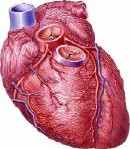- Navigating Your Midlife Crisis: Embracing New Possibilities
- City Raccoons Showing Signs of Domestication
- Mapping the Exposome: Science Broadens Focus to Environmental Disease Triggers
- One Week Less on Social Media Linked to Better Mental Health
- Your Brain Changes in Stages as You Age, Study Finds
- Some Suicide Victims Show No Typical Warning Signs, Study Finds
- ByHeart Formula Faces Lawsuits After Babies Sickened With Botulism
- Switch to Vegan Diet Could Cut Your Greenhouse Gas Emissions in Half
- Regular Bedtime Does Wonders for Blood Pressure
- Dining Alone Could Mean Worse Nutrition for Seniors
Quitting Smoking Improves Angioplasty Outcome, Study Finds


Patients who quit smoking when they have angioplasty — a heart blood vessel-opening procedure — have better outcomes, a new study finds.
Quitting smoking was associated with less chest pain and better quality of life, researchers reported.
“It’s a no-brainer. Stopping smoking seems like a relatively easy way to increase your chances of getting the best outcomes from angioplasty,” said senior author and cardiologist Dr. John Spertus, clinical director of outcomes research at Saint Luke’s Mid America Heart Institute in Kansas City.
The researchers followed more than 2,700 adults who underwent angioplasty for either a heart attack or chest pain. One year after the procedure, 21 percent of those who quit smoking when they had angioplasty had chest pain, compared with 31 percent of those who kept smoking, and 19 percent of those who never smoked or quit smoking before the procedure.
Patients who undergo angioplasty are strongly encouraged to quit smoking in order to reduce the risk of future heart problems. At the one-year follow-up, 38 percent of smokers had quit, according to the study published May 12 in the journal Circulation: Cardiovascular Interventions.
“It’s not just important that we do a good job treating the blockage. Cardiologists have to work with patients to help them stop smoking, whether it means nicotine replacement, a smoking cessation program or some other intervention,” Spertus said in a journal news release.
In angioplasty, a catheter with a balloon is inserted into a coronary — or heart — artery to open the artery and restore blood flow. In nearly all cases, a stent is placed inside the artery to keep it open.
More information
The U.S. National Heart, Lung, and Blood Institute has more about angioplasty.
Source: HealthDay
Copyright © 2025 HealthDay. All rights reserved.










